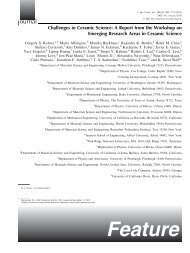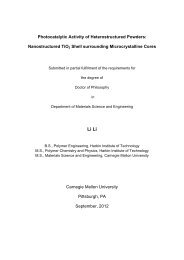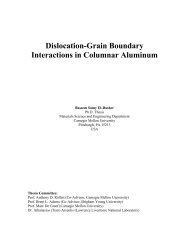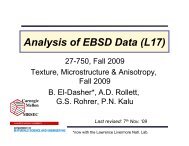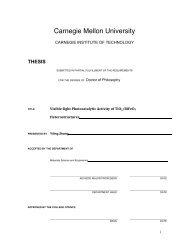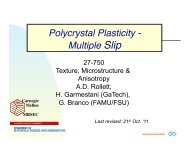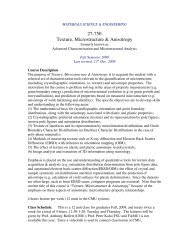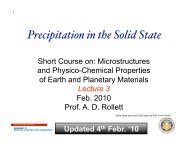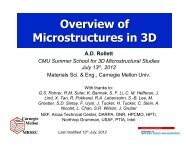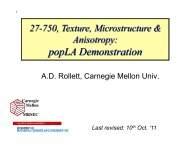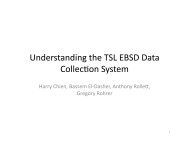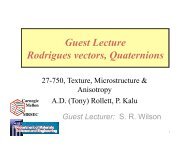¶ 3. Mathematical Representation of Crystal Orientation, Misorientation
¶ 3. Mathematical Representation of Crystal Orientation, Misorientation
¶ 3. Mathematical Representation of Crystal Orientation, Misorientation
You also want an ePaper? Increase the reach of your titles
YUMPU automatically turns print PDFs into web optimized ePapers that Google loves.
Fig. Gii.<strong>3.</strong> Diagram <strong>of</strong> the “Goss” component, showing the how the crystal can be<br />
thought <strong>of</strong> as being rotated 45° about one edge <strong>of</strong> the cube.<br />
The Euler angles for this component are simple, and yet other variants exist, just as for<br />
the cube component. Only one rotation <strong>of</strong> 45° is needed to rotate the crystal from the<br />
reference position (i.e. the cube component) to (011)[100]; this happens to be<br />
accomplished with the 2nd Euler angle.<br />
(φ 1, Φ, φ 2) = (0°,45°,0°).<br />
Other variants will be shown when symmetry is discussed.<br />
⎛ 1 0 0 ⎞<br />
⎜<br />
⎟<br />
Matrix:<br />
⎜<br />
0 1/ 2 1/ 2<br />
⎟<br />
⎜<br />
⎟<br />
⎝ 0 −1/ 2 1/ 2⎠<br />
Rodrigues vector: [ tan(22.5°), 0 , 0 ]<br />
Unit quaternion: [ sin(22.5°) , 0, 0, cos(22.5°)]<br />
Note that, since there is only € one non-zero Euler angle, the rotation axis is obvious by<br />
inspection, i.e. the x-axis. For more general cases, the rotation axis has to be calculated.<br />
8/27/09 22



